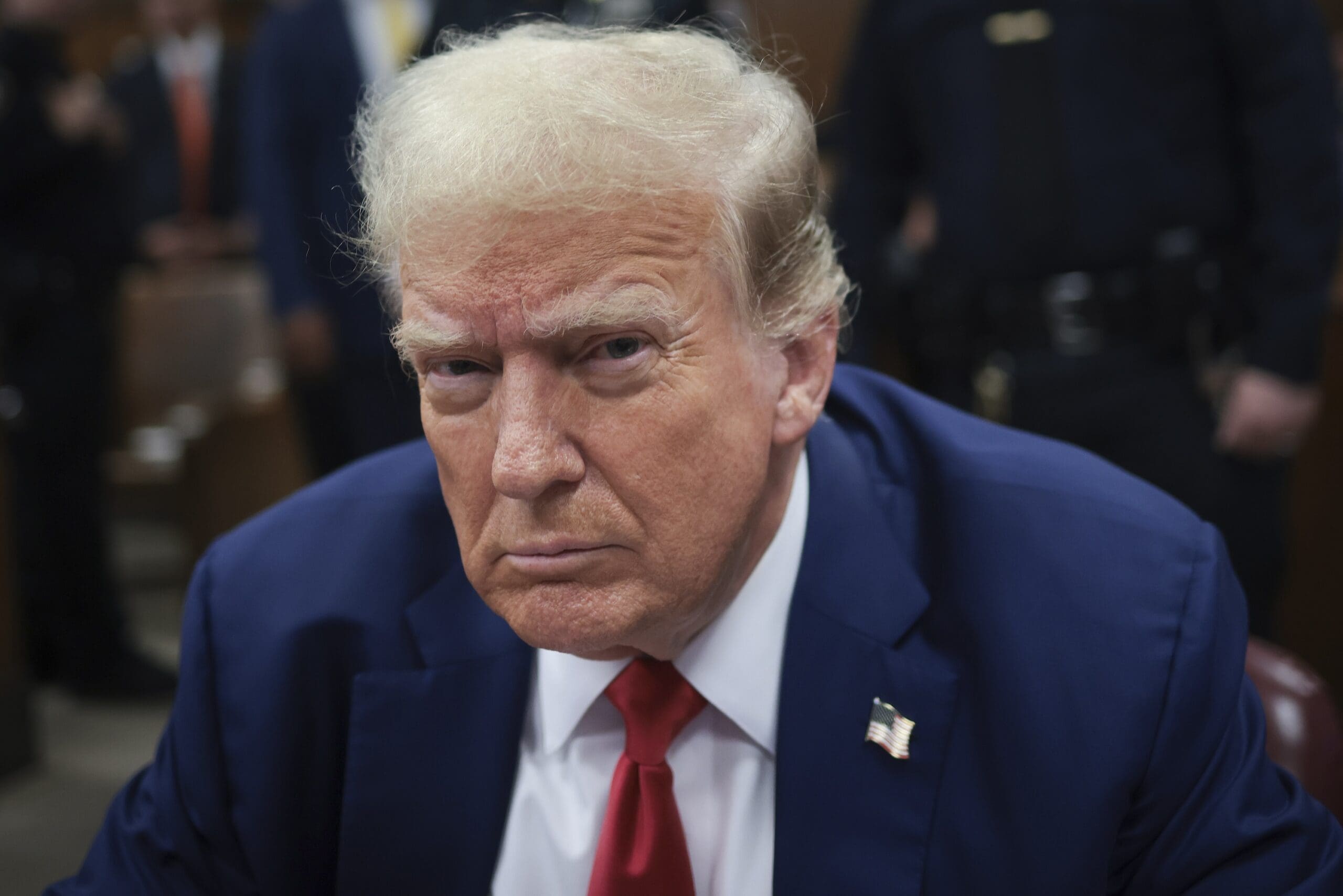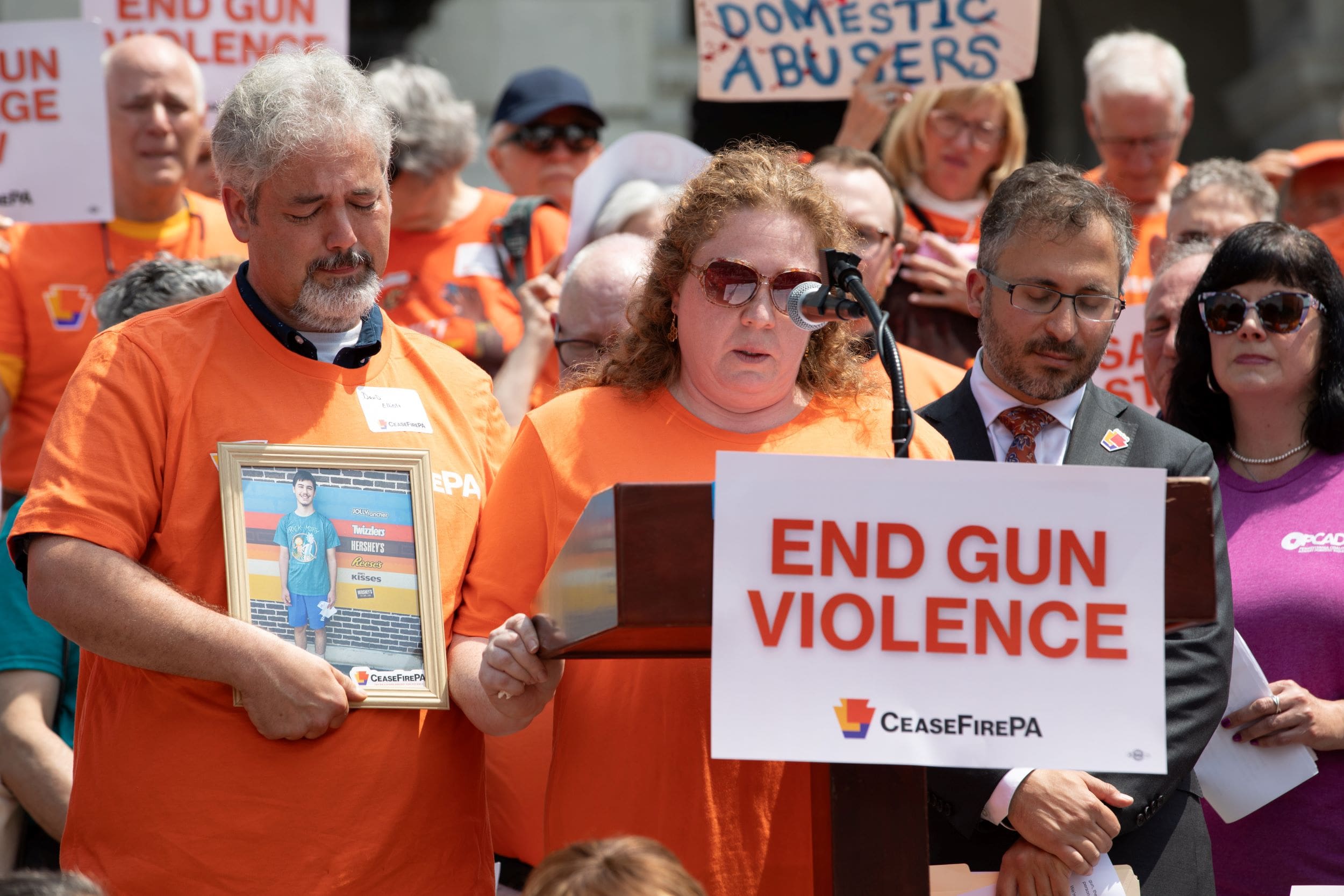As ghost guns terrorize communities, PA lawmakers and advocates seek change
In Philadelphia, the number of ghost guns recovered by law enforcement skyrocketed by 4,600%.

When Peggy Walsh received an alert to lock her doors and remain inside her Bucks County home on March 16, she frantically began trying to find out what was happening from neighbors and friends.
As her two young granddaughters peppered her with questions as to why they couldn’t play outdoors, Walsh learned that police were looking for a man accused of using what’s commonly referred to as a ghost gun to kill three people in Falls Township.
“We did have our granddaughters, a 5-year-old and a 2-year-old, and they kept saying, ‘Why can’t we go outside? Why can’t we go outside?’ And I said, ‘Because Nanny doesn’t really feel like going outside,’ and they just do not understand that.”
After a portion of suburban Philadelphia’s Bucks County was placed in lockdown during the search, police ultimately caught the individual who officials say hijacked a car and fled to New Jersey before being arrested and charged with killing his stepmother, his sister, and the mother of his two children. That arrest brought some relief for Walsh, but the retired educator and longtime gun safety advocate wants a larger issue addressed: the increasing prevalence of the kind of weapon police say was used in the Falls Township shooting.
Ghost guns are homemade firearms that can be assembled from a kit with no serial number and can be purchased without a background check. They can also be 3D-printed. The weapons can be bought online or at gun shows. According to a 2020 report from Everytown, a nonprofit that advocates for gun safety legislation nationwide, a kit to build an AR-15 can be purchased for $345 and a kit to make a Glock-type pistol can go for about $400.
These weapons have landed the moniker ghost guns because their lack of serial numbers and the ability of someone to buy them without a background check makes it nearly impossible for police to trace the weapon to the person who purchased it.
The number of ghost guns found by law enforcement has soared both nationally and in Pennsylvania in recent years. The Bureau of Alcohol, Tobacco, Firearms and Explosives reported that police recovered about 20,000 ghost guns during criminal investigations — a tenfold increase over 2016. In Philadelphia, the number of ghost guns recovered by law enforcement skyrocketed from 12 in 2018 to 575 in 2022, a 4,600% increase.
“We think those guns really do represent one of the most rapidly growing public safety threats across Pennsylvania and across the country,” said Josh Fleitman, the campaign director for CeaseFirePA, an organization that advocates for gun safety legislation in Pennsylvania.
To curb the number of ghost guns in Pennsylvania, the Democratic-led House on March 27 passed House Bill 777, intended to ban the purchase, sale and production of ghost gun parts. The bill would require a background check to purchase ghost gun kits and would mandate serial numbers be printed on the weapons’ frames.
The legislation passed by a 104-97 vote, with all Democrats but one, state Rep. Frank Burns of Cambria County, voting for it. Three Republicans representing southeast Pennsylvania also voted for the bill: Reps. Joe Hogan, K.C. Tomlinson and Martina White. The rest of the Republican House members voted against it.
The bill is now before the state’s Republican-controlled Senate, where, like other gun safety legislation passed by the House over the past year, it’s unlikely to receive a vote.
Democratic lawmakers and gun safety advocates hope to persuade Republican senators to act otherwise. CeaseFirePA, for example, will hold an End Gun Violence: PA Advocacy Day event on May 7, when Fleitman said hundreds of people are expected to congregate at the Capitol in Harrisburg to call on senators to pass the gun safety legislation.
The bill’s advocates are also trying to appeal to their conservative colleagues by noting the legislation does nothing to confiscate people’s guns — a concern often cited by GOP lawmakers — but rather makes it more difficult for people who intend to commit crimes to access untraceable firearms and easier for law enforcement to do their job.
“I want to remind my colleagues today that, again, this bill does not remove firearms or make these firearms illegal,” Rep. Morgan Cephas, a Democrat from Philadelphia and the bill’s lead sponsor, said on the House floor prior to the chamber’s vote on March 27. “What this bill simply does is attempts to curb the access to untraceable guns that are being used at a higher rate because, again, law enforcement aren’t able to keep track, prosecutors aren’t able to prosecute because, again, they are not serialized.”
Backers of the legislation noted that 13 other states have implemented regulations around ghost guns, including neighboring states New York, New Jersey, Delaware, and Maryland. Other states with ghost gun regulations are Colorado, Oregon, Nevada, Washington, California, Hawaii, Illinois, Connecticut, and Rhode Island, according to Everytown.
The legislation comes as public support for regulating ghost guns swells despite Republican lawmakers’ opposition to it. Data for Progress, a progressive think tank and polling firm, released a survey in 2021 that found 73% of likely voters nationwide supported a plan to better regulate ghost guns.
Now is the time, Fleitman said, for lawmakers to listen to a public traumatized by mass shootings, gun suicides and other forms of gun violence, and not to gun lobbyists.
“Ghost gun manufacturers and the gun lobby also know they can make a lot of money off this, and they are shamelessly pursuing profit over the lives of Pennsylvanians and Americans,” Fleitman said. “And too many lawmakers are willing to go along with that and protect the profits of gun manufacturers rather than stopping criminals.”
Most of the Republican lawmakers who spoke against the legislation prior to the House’s March 27 vote questioned the constitutionality of banning ghost gun parts, and many invoked the Second Amendment to the U.S. Constitution.
“This is about our forefathers,” Republican state Rep. Russ Diamond said on the House floor. “This is about our grandfathers, and it’s about us today and upholding the principles that we have lived with here for hundreds of years in the commonwealth of Pennsylvania and the United States of America.”
For those backing the legislation, a list that includes Democratic Gov. Josh Shapiro, the ghost gun legislation has nothing to do with those who lived in the country hundreds of years ago, at a time when there was no such thing as a semi-automatic rifle like the AR-15, which has been used in numerous mass shootings, nor an ability to buy a kit to assemble an untraceable gun at home.
Rather, the bill’s supporters said, the ghost guns bill is rooted in the violence facing the country of today, not two and a half centuries ago. That, advocates said, means recognizing that gun deaths in Pennsylvania have continued to climb in recent years, increasing by 32% between 2012 and 2021, according to Everytown. This increase mirrors an overall growth in the number of firearm deaths in the United States, a country where there are more guns than people and where gun violence has been the leading cause of death for children and teenagers since 2020.
This bill, advocates said, is about addressing at least a portion of the gun violence that has forced young children like Walsh’s 5-year-old granddaughter to participate in drills to prepare for mass shootings.
“My granddaughter had just started kindergarten this year, and one of the things, of course, that they did right away was teach them [about] a dangerous invader in the school and what to do, where to go and how to lock down,” Walsh said. “She was talking to me about that, and I just thought, This is just so, so sad that our little ones have to be afraid like this.”




